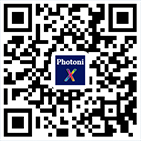| [1] |
Fert A. Nobel lecture: origin, development, and future of spintronics. Rev Mod Phys. 2008;80:1517–30.
|
| [2] |
Dery H, Dalal P, Cywiński Ł, Sham LJ. Spin-based logic in semiconductors for reconfigurable large-scale circuits. Nature. 2007;447:573–6.
|
| [3] |
Chappert C, Fert A, Van Dau FN. The emergence of spin electronics in data storage. Nat Mater. 2007;6:813–23.
|
| [4] |
Mead C. Neuromorphic electronic systems. Proc IEEE. 1990;78:1629–36.
|
| [5] |
Burr GW, et al. Neuromorphic computing using non-volatile memory. Adv Physics X. 2017;2:89–124.
|
| [6] |
Grollier J, et al. Neuromorphic spintronics. Nat Electron. 2020;3:360–70.
|
| [7] |
Landauer R. Irreversibility and heat generation in the computing process. IBM J Res Dev. 1961;5:183–91.
|
| [8] |
Chen X, Ye H, Fan X, Ren T, Zhang G. A review of small heat pipes for electronics. Appl Therm Eng. 2016;96:1–17.
|
| [9] |
Bahiraei M, Heshmatian S. Electronics cooling with nanofluids: a critical review. Energy Convers Manag. 2018;172:438–56.
|
| [10] |
Yu ZQ, Li MT, Cao BY. A comprehensive review on microchannel heat sinks for electronics cooling. Int J Extrem Manuf. 2024;6:022005.
|
| [11] |
Waldrop MM. The chips are down for Moore’s law. Nature. 2016;530:144–7.
|
| [12] |
Kryder MH, et al. Heat assisted magnetic recording. Proc IEEE. 2008;96:1810–35.
|
| [13] |
Paolucci F, Marchegiani G, Strambini E, Giazotto F. Phase-tunable thermal logic: computation with heat. Phys Rev Appl. 2018;10:024003.
|
| [14] |
Poulsen K, Zinner NT. Heat-based circuits using quantum rectification. Phys Rev A. 2024;109:052223.
|
| [15] |
Nataf GF, et al. Using oxides to compute with heat. Nat Rev Mater. 2024;9:530–1.
|
| [16] |
Wang L, Li B. Thermal logic gates: computation with phonons. Phys Rev Lett. 2007;99:177208.
|
| [17] |
Kathmann C, Reina M, Messina R, Ben-Abdallah P, Biehs S-A. Scalable radiative thermal logic gates based on nanoparticle networks. Sci Rep. 2020;10:3596.
|
| [18] |
Chang CW, Okawa D, Majumdar A, Zettl A. Solid-state thermal rectifier. Science. 2006;314:1121–4.
|
| [19] |
Martínez-Pérez MJ, Fornieri A, Giazotto F. Rectification of electronic heat current by a hybrid thermal diode. Nat Nanotechnol. 2015;10:303–7.
|
| [20] |
Zhu Q, Zdrojewski K, Castelli L, Wehmeyer G. Oscillating gadolinium thermal diode using temperature-dependent magnetic forces. Adv Funct Mater. 2022;32:2206733.
|
| [21] |
Ligato N, Paolucci F, Strambini E, Giazotto F. Thermal superconducting quantum interference proximity transistor. Nat Phys. 2022;18:627–32.
|
| [22] |
Castelli L, Zhu Q, Shimokusu TJ, Wehmeyer G. A three-terminal magnetic thermal transistor. Nat Commun. 2023;14:393.
|
| [23] |
Lim JW, et al. A nanoscale photonic thermal transistor for sub-second heat flow switching. Nat Commun. 2024;15:5584.
|
| [24] |
Wang L, Li B. Thermal memory: a storage of phononic information. Phys Rev Lett. 2008;101:267203.
|
| [25] |
Xie R, et al. An electrically tuned solid-state thermal memory based on metal–insulator transition of single-crystalline VO2 nanobeams. Adv Funct Mater. 2011;21:1602–7.
|
| [26] |
Fornieri A, Timossi G, Bosisio R, Solinas P, Giazotto F. Negative differential thermal conductance and heat amplification in superconducting hybrid devices. Phys Rev B. 2016;93:134508.
|
| [27] |
Jungwirth T, Marti X, Wadley P, Wunderlich J. Antiferromagnetic spintronics. Nat Nanotechnol. 2016;11:231–41.
|
| [28] |
Baltz V, et al. Antiferromagnetic spintronics. Rev Mod Phys. 2018;90:015005.
|
| [29] |
Němec P, Fiebig M, Kampfrath T, Kimel AV. Antiferromagnetic optospintronics. Nat Phys. 2018;14:229–41.
|
| [30] |
Bossini D, et al. Macrospin dynamics in antiferromagnets triggered by sub-20 femtosecond injection of nanomagnons. Nat Commun. 2016;7:10645.
|
| [31] |
Olejník K, et al. Terahertz electrical writing speed in an antiferromagnetic memory. Sci Adv. 2018;4:eaa3566.
|
| [32] |
Gomonay O, Baltz V, Brataas A, Tserkovnyak Y. Antiferromagnetic spin textures and dynamics. Nat Phys. 2018;14:213–6.
|
| [33] |
Fukami S, Zhang C, Duttagupta S, Kurenkov A, Ohno H. Magnetization switching by spin–orbit torque in an antiferromagnet–ferromagnet bilayer system. Nat Mater. 2016;15:535–41.
|
| [34] |
Olejník K, et al. Antiferromagnetic CuMnAs multi-level memory cell with microelectronic compatibility. Nat Commun. 2017;8:15434.
|
| [35] |
Kašpar Z, et al. Quenching of an antiferromagnet into high resistivity states using electrical or ultrashort optical pulses. Nat Electron. 2021;4:30–7.
|
| [36] |
Kurenkov A, Fukami S, Ohno H. Neuromorphic computing with antiferromagnetic spintronics. J Appl Phys. 2020;128:010902.
|
| [37] |
Bindal N, Ian CAC, Lew WS, Kaushik BK. Antiferromagnetic skyrmion repulsion based artificial neuron device. Nanotechnology. 2021;32:215204.
|
| [38] |
Bradley H, et al. Artificial neurons based on antiferromagnetic auto-oscillators as a platform for neuromorphic computing. AIP Adv. 2023;13:015206.
|
| [39] |
Wadley P, et al. Electrical switching of an antiferromagnet. Science. 2016;351:587–90.
|
| [40] |
Wadley P, et al. Current polarity-dependent manipulation of antiferromagnetic domains. Nat Nanotechnol. 2018;13:362–5.
|
| [41] |
Olejník K, et al. Quench switching of Mn2As. Phys Rev B. 2025;112:144401.
|
| [42] |
Surýnek M, et al. Picosecond transfer from short-term to long-term memory in analog antiferromagnetic memory device. Newton. 2025;1:100034.
|
| [43] |
Wong HSP, Salahuddin S. Memory leads the way to better computing. Nat Nanotechnol. 2015;10:191–4.
|
| [44] |
Sebastian A, Le Gallo M, Khaddam-Aljameh R, Eleftheriou E. Memory devices and applications for in-memory computing. Nat Nanotechnol. 2020;15:529–44.
|
| [45] |
Lian C, et al. Photonic (computational) memories: tunable nanophotonics for data storage and computing. Nanophotonics. 2022;11:3823–54.
|
| [46] |
Zubáč J, et al. Investigation of opto-magnetic memory effects in antiferromagnetic CuMnAs using ultrafast heat dynamics and quench switching. Adv Electron Mater. 2025;11:2400835.
|
| [47] |
Ohno T, et al. Short-term plasticity and long-term potentiation mimicked in single inorganic synapses. Nat Mater. 2011;10:591–5.
|
| [48] |
Chang T, Jo SH, Lu W. Short-term memory to long-term memory transition in a nanoscale memristor. ACS Nano. 2011;5:7669–76.
|
| [49] |
Ji X, et al. Mimicking associative learning using an ion-trapping non-volatile synaptic organic electrochemical transistor. Nat Commun. 2021;12:2480.
|
| [50] |
Fuster JM, Alexander GE. Neuron activity related to short-term memory. Science. 1971;173:652–4.
|
| [51] |
Abbott LF, Regehr WG. Synaptic computation. Nature. 2004;431:796–803.
|
| [52] |
Zucker RS, Regehr WG. Short-term synaptic plasticity. Annu Rev Physiol. 2002;64:355–405.
|
| [53] |
Grande LA, Spain WJ. Synaptic depression as a timing device. Physiology. 2005;20:201–10.
|
| [54] |
Regehr WG. Short-term presynaptic plasticity. Cold Spring Harb Perspect Biol. 2012;4:a005702.
|
| [55] |
Shiffrin RM, Atkinson RC. Storage and retrieval processes in long-term memory. Psychol Rev. 1969;76:179–93.
|
| [56] |
Bliss TV, Collingridge GL. A synaptic model of memory: long-term potentiation in the hippocampus. Nature. 1993;361:31–9.
|
| [57] |
Bi G, Poo M. Synaptic modification by correlated activity: Hebb’s postulate revisited. Annu Rev Neurosci. 2001;24:139–66.
|
| [58] |
Li C, et al. Short-term synaptic plasticity in emerging devices for neuromorphic computing. iScience. 2023;26:106315.
|
| [59] |
Hennig MH. Theoretical models of synaptic short term plasticity. Front Comput Neurosci. 2013;7:45.
|
| [60] |
Atkinson RC, Shiffrin RM. Human memory: a proposed system and its control processes. In: Spence KW, Spence JT, editors. The psychology of learning and motivation: advances in research and theory vol. 2. Academic Press; 1968. p. 89–195. https://escholarship.org/uc/item/5kd4s4j3.
|
| [61] |
Křížek F, et al. Molecular beam epitaxy of CuMnAs. Phys Rev Mater. 2020;4:014409.
|
| [62] |
Surýnek M, et al. Investigation of magnetic anisotropy and heat dissipation in thin films of compensated antiferromagnet CuMnAs by pump–probe experiment. J Appl Phys. 2020;127:233904.
|
| [63] |
Kirilyuk A, Kimel AV, Rasing Th. Ultrafast optical manipulation of magnetic order. Rev Mod Phys. 2010;82:2731–84.
|
| [64] |
Stanciu CD. All-optical magnetic recording with circularly polarized light. Phys Rev Lett. 2007;99:047601.
|
| [65] |
Ostler TA, et al. Ultrafast heating as a sufficient stimulus for magnetization reversal in a ferrimagnet. Nat Commun. 2012;3:666.
|
| [66] |
Lambert CH, et al. All-optical control of ferromagnetic thin films and nanostructures. Science. 2014;345:1337–40.
|
| [67] |
Kimel AV, Li M. Writing magnetic memory with ultrashort light pulses. Nat Rev Mat. 2019;4:189–200.
|
| [68] |
Igarashi J, Zhang W, Remy Q, et al. Optically induced ultrafast magnetization switching in ferromagnetic spin valves. Nat Mater. 2023;22:725–30.
|
| [69] |
Scheid P, Remy Q, Lebègue S, Malinowski G, Mangin S. Light induced ultrafast magnetization dynamics in metallic compounds. J Mag Mag Mater. 2022;560:169596.
|
| [70] |
Hao D, Liu D, Zhang J, Wang Y, Huang J. Lead-free perovskites-based photonic synaptic devices with logic functions. Adv Mater Technol. 2021;6:2100678.
|
| [71] |
He N, et al. Multifunctional Ag–In–Zn–S/Cs3Cu2Cl5-based memristors with coexistence of non-volatile memory and volatile threshold switching behaviors for neuroinspired computing. Adv Electron Mater. 2023;9:2201038.
|
| [72] |
Dong L, et al. Artificial optoelectronic synapse based on violet phosphorus microfiber arrays. Small. 2023;20:2306998.
|
| [73] |
Wang J, et al. Technology and integration roadmap for optoelectronic memristor. Adv Mater. 2024;36:2307393.
|
| [74] |
Grzybowski MJ, et al. Imaging current-induced switching of antiferromagnetic domains in CuMnAs. Phys Rev Lett. 2017;118:057701.
|
| [75] |
Křížek F, et al. Atomically sharp domain walls in an antiferromagnet. Sci Adv. 2022;8:eabn3535.
|
| [76] |
Ho A, Erdil E, Besiroglu T. Limits to the energy efficiency of CMOS microprocessors. 2023. Preprint at https://arxiv.org/pdf/2312.08595.
|
| [77] |
van de Burgt Y, et al. A non-volatile organic electrochemical device as a low-voltage artificial synapse for neuromorphic computing. Nat Mater. 2017;16:414–8.
|
| [78] |
Zhu L, Zhu L, Shi S, Ralph DC, Buhrman RA. Energy-efficient ultrafast SOT-MRAMs based on low-resistivity spin hall metal Au0.25Pt0.75. Adv Electron Mater. 2020;6:1901131.
|
| [79] |
Novotny L, Pohl DW, Hecht B. Scanning near-field optical probe with ultrasmall spot size. Opt Lett. 1995;20:970–2.
|
| [80] |
Chen X, et al. Neuromorphic photonic memory devices using ultrafast, non-volatile phase-change materials. Adv Mater. 2023;35:2203909.
|
| [81] |
Surýnek M, Nádvorník L, Schmoranzerová E, Němec P. Quasi-nondegenerate pump–probe magnetooptical experiment in GaAs/AlGaAs heterostructure based on spectral filtration. New J Phys. 2020;22:093065.
|
 点击查看大图
点击查看大图








 下载:
下载:

